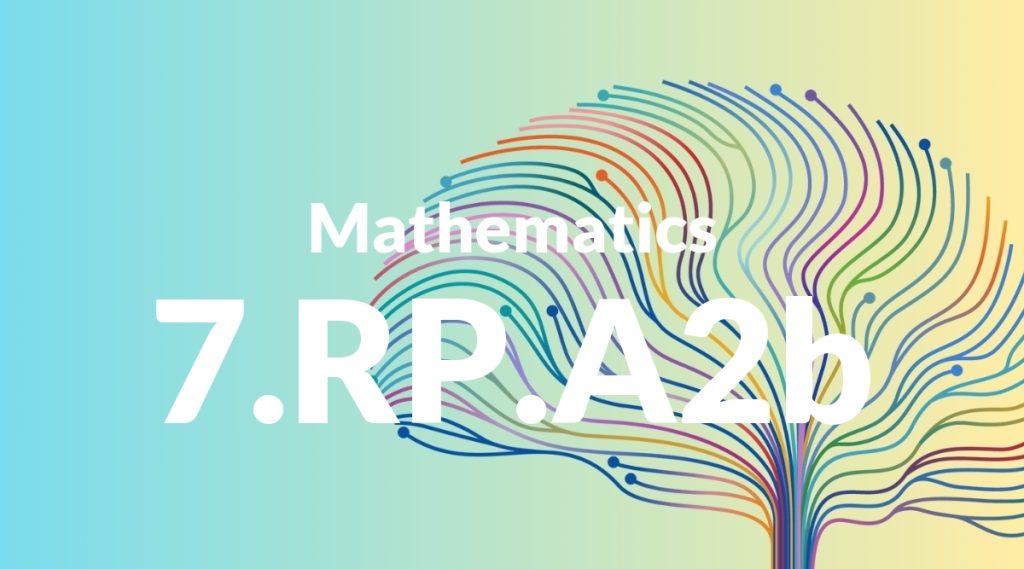Standard: 7.RP.A2b – Identify the constant of proportionality (unit rate) in tables, graphs, equations, diagrams, and verbal descriptions of proportional relationships.
Grade level: Grade 7
Subject: Mathematics
Domain: Ratios & Proportional Relationships
Teacher Overview
This standard focuses on helping students identify the constant of proportionality, or unit rate, in various representations of proportional relationships. Understanding unit rates is crucial as it forms the basis for more advanced topics in algebra and real-world problem-solving. Students should have a strong grasp of fractions, decimals, and basic graphing skills. They should also be familiar with the concept of ratios.
Mastering this standard will prepare students for more advanced topics in algebra, such as solving linear equations and understanding functions, where proportional relationships play a key role.
Common Misconception 1
Students often confuse the constant of proportionality with the ratio itself. This misconception arises because both concepts are closely related, but they serve different purposes.
Intervention 1
To address this, use visual aids and real-world examples to differentiate between the ratio and the unit rate, emphasizing the unit rate as a specific value derived from the ratio.
Common Misconception 2
Another common misconception is that the unit rate changes with different quantities. This occurs because students may not yet understand that the unit rate is a fixed value.
Intervention 2
To correct this, provide consistent examples showing that the unit rate remains the same, regardless of the quantities involved, and use activities that reinforce this concept.
Prerequisite Knowledge
Students should understand basic fraction and decimal concepts, be able to interpret and create simple graphs, and have a foundational understanding of ratios.
Subsequent Knowledge
After mastering this standard, students will be able to solve more complex problems involving proportional relationships, such as those found in linear equations and functions.
Instructional Activities
- Create tables and graphs from given ratios and identify the unit rate.
- Solve word problems involving unit rates in real-world contexts.
- Use diagrams to visually represent proportional relationships.
- Engage in group activities to compare unit rates from different scenarios.
- Practice converting between different representations of proportional relationships.




